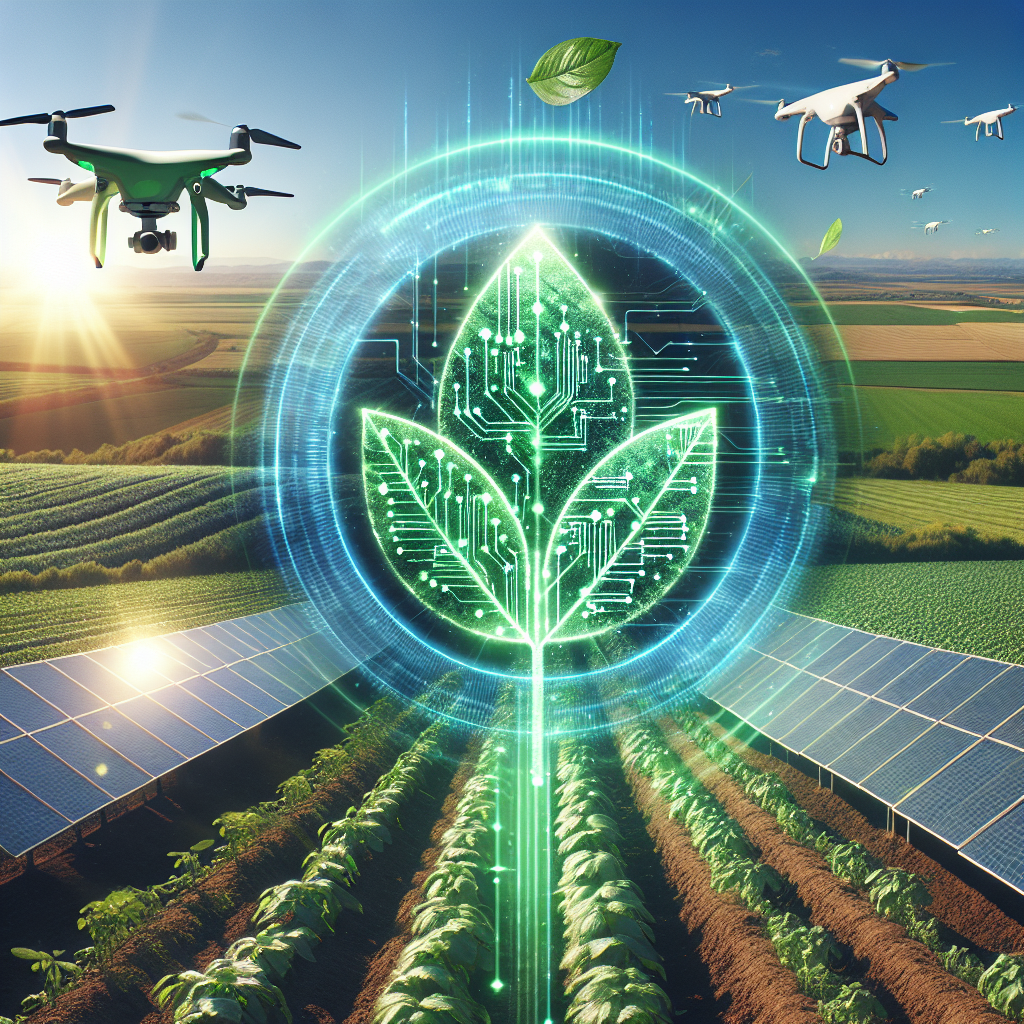Agricultural sustainability is a crucial issue in today’s world as the global population continues to grow, and resources become more scarce. In order to feed the growing population while also protecting the environment, it is important to find innovative solutions that can increase productivity while minimizing negative impacts on the environment. One such solution is the use of artificial intelligence (AI) in agriculture.
AI refers to the simulation of human intelligence processes by machines, especially computer systems. In agriculture, AI can be used to analyze data, make predictions, and optimize processes in order to improve productivity and sustainability. There are several ways in which AI can be used in agriculture to achieve these goals.
One way in which AI can be used in agriculture is through the use of drones and sensors. Drones equipped with cameras and sensors can fly over fields and collect data on crop health, soil moisture levels, and pest infestations. This data can then be analyzed by AI algorithms to make predictions about the best course of action, such as when to water crops, apply fertilizer, or spray pesticides. By using drones and sensors in this way, farmers can optimize their use of resources and reduce waste, leading to increased productivity and sustainability.
Another way in which AI can be used in agriculture is through the use of predictive analytics. By analyzing historical data on weather patterns, soil conditions, and crop yields, AI algorithms can make predictions about future trends and help farmers make informed decisions about planting, harvesting, and pest control. This can help farmers adapt to changing conditions and reduce the risk of crop failure, leading to more sustainable farming practices.
AI can also be used in agriculture to optimize the use of resources such as water and fertilizer. By analyzing data on soil conditions, weather patterns, and crop health, AI algorithms can recommend the optimal amount of water and fertilizer to apply to crops in order to maximize yield while minimizing waste. This can help farmers reduce their environmental impact and improve sustainability by using resources more efficiently.
In addition to optimizing resource use, AI can also be used to improve crop breeding and genetic engineering. By analyzing genetic data and breeding histories, AI algorithms can make predictions about which plant varieties are likely to have the best yield, resistance to pests and diseases, and nutritional content. This can help breeders develop new varieties of crops that are more resilient and productive, leading to increased sustainability in agriculture.
Overall, the role of AI in agricultural sustainability is crucial for feeding the growing population while also protecting the environment. By using AI to analyze data, make predictions, and optimize processes, farmers can improve productivity, reduce waste, and adapt to changing conditions in order to achieve more sustainable farming practices.
FAQs:
Q: What are some examples of AI technologies used in agriculture?
A: Some examples of AI technologies used in agriculture include drones equipped with cameras and sensors, predictive analytics algorithms, and genetic engineering tools.
Q: How can AI help farmers improve sustainability?
A: AI can help farmers improve sustainability by optimizing resource use, making predictions about future trends, and developing new varieties of crops that are more resilient and productive.
Q: Are there any drawbacks to using AI in agriculture?
A: Some drawbacks to using AI in agriculture include the cost of implementing new technologies, the need for training and expertise, and concerns about data privacy and security.
Q: How can farmers benefit from using AI in agriculture?
A: Farmers can benefit from using AI in agriculture by increasing productivity, reducing waste, and adapting to changing conditions in order to achieve more sustainable farming practices.

